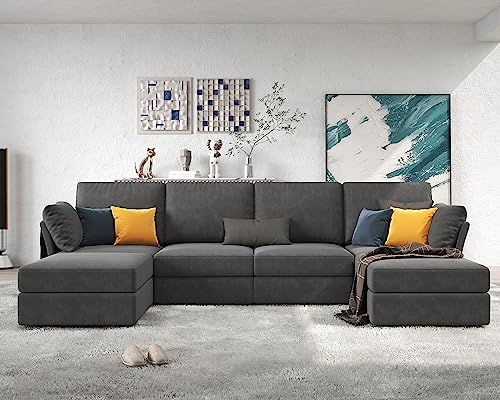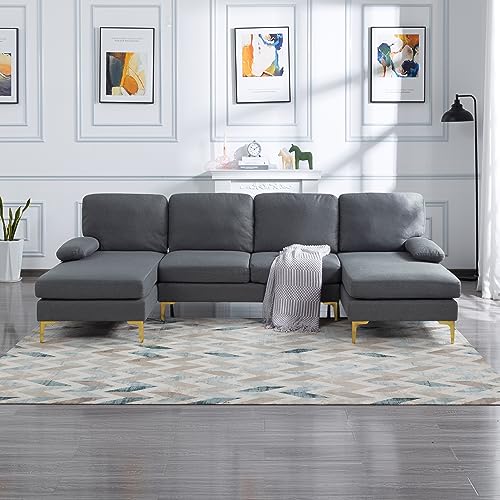One What Are U Shaped Valleys Success Story You'll Never Be Able To
페이지 정보

본문
 What Are big u shaped couch Shaped Valleys?
What Are big u shaped couch Shaped Valleys?A U-shaped Valley is a geological formation that has high, steep sides and an elongated or flat valley bottom. These valleys are formed by glaciation. They usually contain lakes, rivers, sandtraps on golf courses, kettle lakes (water hazards) or other natural features.
The erosion of glaciers creates U-shaped valleys by plucking rocks from the sides and bottom of the valley. These valleys are found in mountainous regions across the world.
They are formed by glaciers.
Glaciers are huge bodies of ice that form on mountains, and then move down them. When they degrade the landscape, they create U-shaped valleys that have flat floors and steep sides. These valleys differ from the river valleys, which tend to be shaped in the shape of a V. While glacial erosion can happen everywhere but these valleys tend to be more common in mountainous areas. They are so distinctive that you can tell if the landscape was formed by glaciers or rivers.
The formation of a U-shaped gorge begins with an existing V-shaped river valley. As the glacier degrades the landscape, it encroaches upon the V-shaped river valley and produces an inverted U-shaped shape. The ice also scrubbing the surface of the land creating straight and high walls along the sides of the valley. This process is referred to as glaciation, and it takes an enormous amount of strength to break up the earth this way.
As the glacier continues to degrade the landscape, it also makes the valley wider and deeper. The glacier's ice is less abrasive than the rocks. As the glacier travels down the valley, it creates abrasion on the rock surfaces and pulls the rocks that are weak from the valley wall in a process referred to as plucking. These processes work together to smooth, widen and deepen the U-shaped valley.
These processes also cause a tiny side valley to hang' above the main valley. This valley is often filled with ribbon lakes that are formed by water rushing through the glacier. The valley is also distinguished by striations, ruts and striations on the sides and the floor, as also moraines and till on the floor.
The world is filled with U-shaped valleys. They are common in mountainous areas, including the Andes, Alps, Caucasus, Himalaya and Rocky Mountains. In the United States, they are typically found in national parks. Examples include the Nant Ffrancon valley in Wales and Glacier National Park in Montana. In some instances valleys can extend to the coast and turn into fjords. This is an natural process that occurs when the glacier melts, and it could take tens of thousands of years to get these valleys created.
They are deep
U-shaped valleys are distinguished by steep sides that curve at the bottom and wide flat valley floor. They are created by river valleys that have been filled with glaciers during the Ice Age. Glaciers degrade valley floors through cutting and abrasion which causes the valley to widen and deepen more evenly than it would with a river. These types of features are common throughout the world in mountainous areas which include the Andes, Alps, Himalayas, Rocky Mountains, and New Zealand.
The erosion of glaciers in a valley can change it into a u shape sectional sofas-shaped one by enlarging and deepening it. The erosive power of the glacier can also cause smaller side valleys to be left hanging above the main valley, which is often marked by waterfalls. These are referred to as "hanging valleys" because they hang above the main valley as the glacier recedes.
These valleys are often enclosed by forests and contain lakes. Some valleys are dry and are used for farming, whereas others are swamped and can be visited as part of a kayaking or hiking trip. A large number of these valleys are located in Alaska, where the glacial melt is most pronounced.
Valley glaciers are huge, like river-like flows that slowly slide down mountain slopes. They can reach depths of more than 1000 feet and are the most common type of valley erosion in alpine regions. They consume the rocks at the bottom of the valley, leaving behind depressions and holes filled with water. The resulting lakes are long and thin, and can be found in the peaks of certain mountains.
A glacial trough is a different kind of valley. It is a U shape valley that extends out into the saltwater to create a Fjord. They are prevalent in Norway in Norway, where they are referred to as fjords, but are also found in other parts of the world. They are created by melting glaciers, and can be seen on maps of the globe. They are typically characterized by rounded sides that resemble a U shape in cross-section and steep sides. The trough walls are generally constructed from granite.
They are a bit steep
A grey u shaped sectional (https://frostreward18.bravejournal.net/) form valley is a geological formation with steep, high sides and a rounded bottom. Glaciers are responsible for many of these valleys. They are common in mountainous areas. This is because glaciers are slow moving rivers of ice that move downhill, scouring land as they go. Scientists used to think that glaciers wouldn't be able to carve valleys due to the fact that they are so soft, but now we know they can create these forms.
Glaciers form distinctive u-shaped valleys through the processes of abrasion as well as plucking. Through erosion these processes can broaden, steepen, and deepen V shaped river valleys. The slopes of the valley bottom are also altered. These changes occur at the front of the glacier when it turns into the valley. This is the reason why the top of U-shaped valleys is usually larger than the lower.
Sometimes, U-shaped valleys may be filled with lakes. These kettle lakes form in hollows that have been eroded by the glacier, or blocked by the moraine. The lake may be a temporary feature when the glacier melts, or may remain after the glacier recedes. These lakes are often found along with cirques.
A flat-floored Valley is a different kind of valley. It is formed by streams which erode the soil. However it doesn't have a steep slope like a U-shaped valley. They are typically located in mountainous areas, and can be a lot older than other types of valleys.
There are many different types of valleys in the world and each one has a unique appearance. The most common kind of valley is a V-shaped one, but there are also U-shaped and rift valleys. A rift valley is formed in areas where the crust of the earth is breaking apart. These are usually narrow valleys that have steep sides. The Nant Ffrancon valley in Snowdonia, Wales is a good illustration of this.
They are wide
U-shaped valleys are distinguished by their broad bases, unlike V-shaped ones. Glaciers are the primary cause of these valleys, which are generally located in mountain ranges. Glaciers are massive blocks of ice and snow that erode landscapes as they move downwards. They degrade valleys by friction and the abrasion. This process is referred to as Scouring. As they erode the landscape, the glaciers form a distinctive shape resembling a letter U. These valleys are known as U-shaped valleys and can be located in many places around the world.
These valleys form when glaciers degrade valleys of rivers. The glacier's slow movement and weight erodes the valley's sides and floor, creating a distinctive U shape. This process, known as glacial erosion, has resulted in some of the most stunning landscapes on Earth.
These valleys are often referred to as glacial troughs or trough valleys. These valleys can be found throughout the world, but they are particularly in areas with mountains and glaciers. They can vary in sizes ranging from a few meters to hundreds of kilometers. They also differ in depth and length. The deeper the valley is the more intense the fluctuation of temperature will be.
A fjord, or a ribbon lake is formed when a U-shaped gorge fills with water. The ribbon lakes are formed in the depressions in which the glacier cut the less resistant rock. They can also form in a valley where the glacier has been stopped by the wall.
U-shaped valleys could also include other glacial features, like moraine dams, hanging valleys, and the erratics. Erratics are huge boulders that were left behind by glaciers during their movement. They can be used to define the boundaries between glaciated areas.
These smaller valleys are left 'hanging" above the main valley that was created by the glacier. These valleys aren't as deep as the main valley and they contain less ice. These valleys are created by tributary ice and are often topped by waterfalls.

- 이전글A Guide to Host Bar Job Locations 24.08.22
- 다음글What Everyone Must Know about Serfaty 24.08.22
댓글목록
등록된 댓글이 없습니다.
